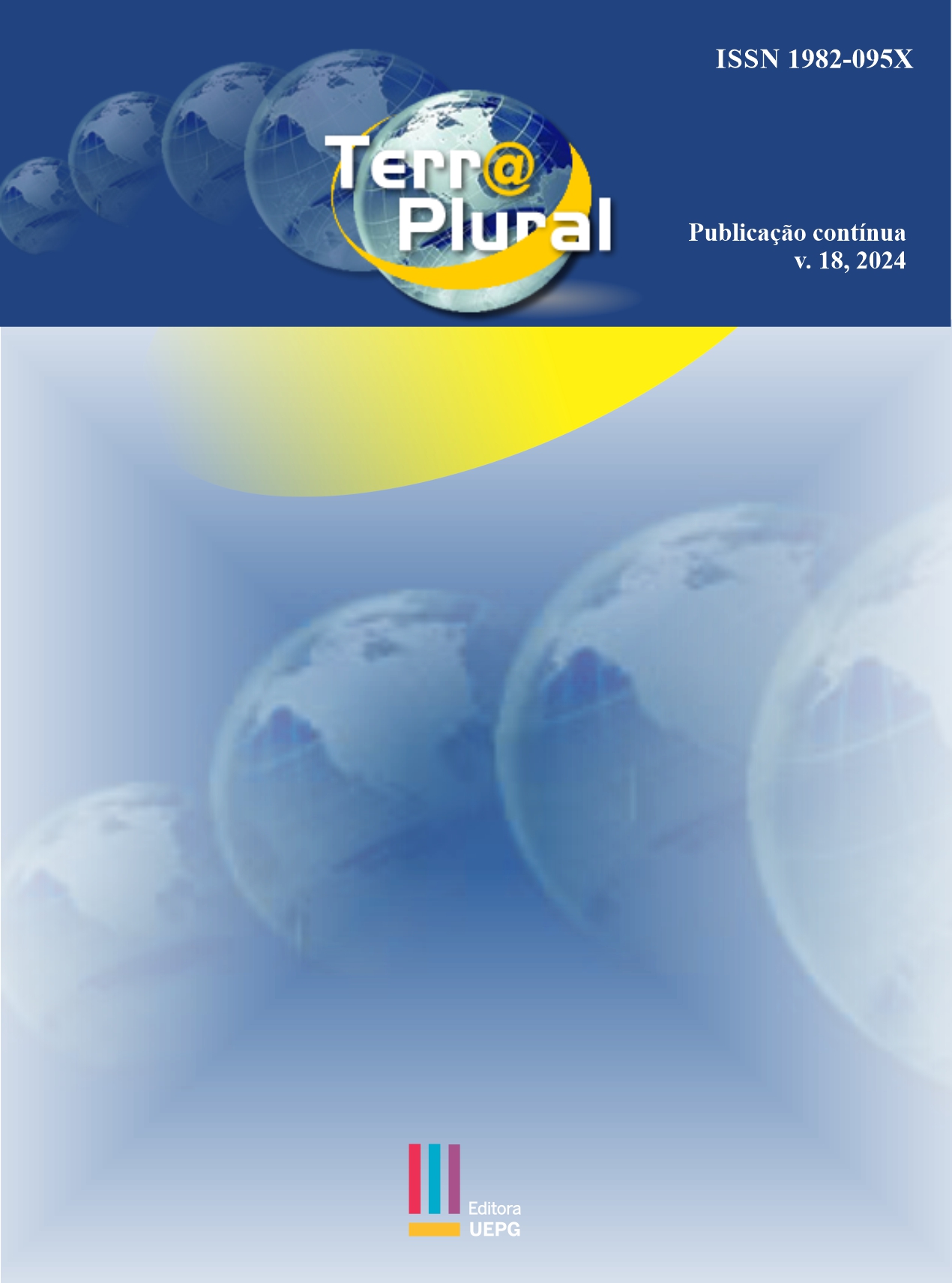Rainfall variability in the São Paulo area of the Ribeira de Iguape river basin (Brazil) and the influence of ENOS, based on the Box-Plot technique
DOI:
https://doi.org/10.5212/TerraPlural.v.18.2423128.012Keywords:
rainfall variability, rainy months, dry months, rainfall stationAbstract
An analysis of monthly rainfall was carried out during years influenced by the El Niño-Southern Oscillation (ENSO) phenomena in the Ribeira de Iguape Valley, located in the southeast of the state of São Paulo. Data from 1970 to 2017 from 18 rainfall stations distributed across the upper, middle and lower reaches of the Ribeira de Iguape river were analyzed using the Box-Plot methodology to identify monthly standard years. A water surplus was observed in precipitation during years influenced by ENSO, while in years influenced by La Niña phenomena (LA) there was greater variability in rainfall. In many ENSO years, surpluses occurred mainly in spring (October, November and December) and late summer (January, February and March). In the LA phase, droughts were more evident in the spring (September and October) and in the months of February and March. It is concluded that the phenomenon in the region presents monthly variability and does not follow a constant and spatially regular pattern. Therefore, it is necessary to analyze and understand other atmospheric phenomena, such as cold fronts, the Southern Annular Mode (MAS), the South Atlantic Dipole, and the EN Canônico/Modoki, among others, which can influence the dynamics of rainfall in the region.
Downloads
Downloads
Published
How to Cite
Issue
Section
License
Copyright (c) 2024 Valéria Machado Emiliano, Nádia Gilma Beserra de Lima, Jakeline Baratto, Emerson Galvani

This work is licensed under a Creative Commons Attribution-NonCommercial-NoDerivatives 4.0 International License.
Revista Terr@ Plural will obtain the auctorial rights for all published texts. This also implies that the text can be published anywhere in the world, including all rights on renewal, expansion, and dissemination of the contribution, as well as other subsidiary rights. The authors get permission to publish the contribution in other media, printed or digital, it may be in Portuguese or translation since the publication is credited to Revista Terr@ Plural. It allows the self-archiving of published articles in institutional repositories, thematic repositories, or personal web pages in the pdf version downloaded from the journal's site.















